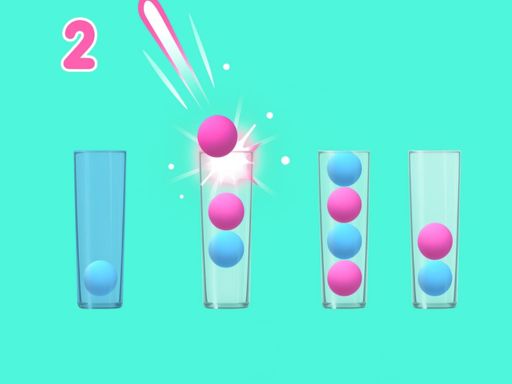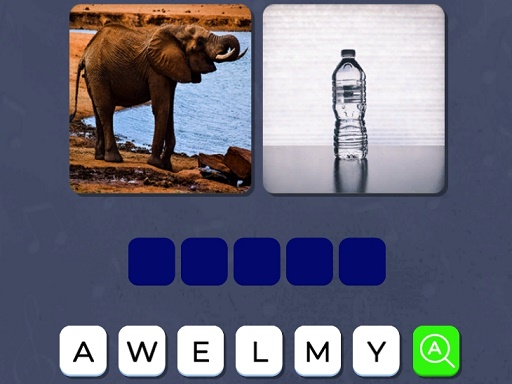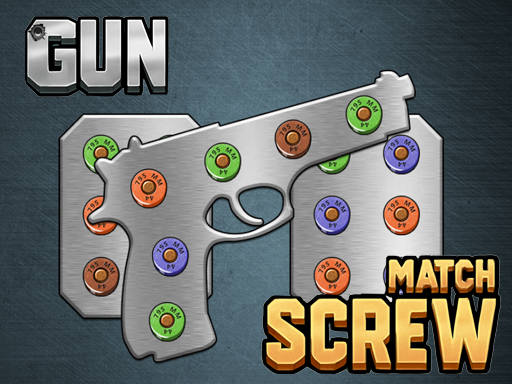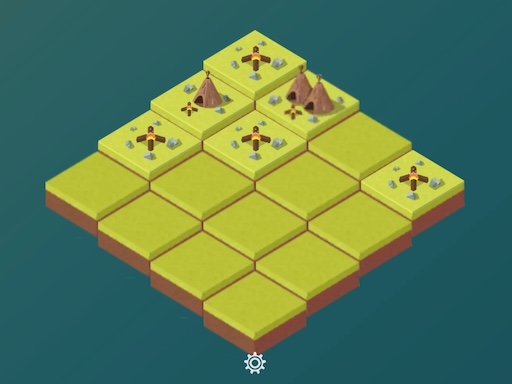Visual Glitch: Spot the Differences
About Visual Glitch: Spot the Differences
Dude, you are not going to *believe* the game I just stumbled upon. Seriously, put down whatever you're doing, because I need to tell you about this. It's called "Visual Glitch: Spot the Differences Challenge," and I swear, it's not just another one of *those* games. This is different. This is next level. I've been completely sucked into it for the past week, and I honestly can't remember the last time a puzzle game grabbed me this hard.
You know me, I've always been drawn to games that really test your observation skills, the ones that make you feel like a detective, poring over every pixel. There's something magical about that moment when your eyes finally lock onto something that was hidden in plain sight, that little 'click' in your brain. But most spot-the-differences games, after a while, they just become… predictable, right? You start to anticipate the common tricks, the mirrored images, the swapped colors. They lose their spark.
But this one? Oh man, this one reinvents the whole genre. What's fascinating is how it takes a simple concept and twists it into something genuinely fresh and, dare I say, a little unsettling. The core idea is still spot-the-differences, but the developers, they’ve leaned into this incredible aesthetic they call "Italian brainrot images." Now, before you picture something grotesque, it's not that. It's more like a surreal, memetic, almost dreamlike quality to the pictures. Think vibrant, often absurd, sometimes beautiful, sometimes just plain bizarre imagery, usually with a distinctly Italian cultural flavor – but seen through a distorted lens. It's like looking at a memory that's just a little bit off, or a meme that's been re-posted one too many times, accumulating layers of subtle, digital decay.
And that's where the "visual glitch" part comes in. This isn't just about finding a missing button or a changed shirt color. Oh no. The differences are *glitches*. They're subtle distortions, shimmering pixels, slight shifts in texture that look like data corruption, or maybe a tiny, almost imperceptible tear in the fabric of reality. You'll find yourself staring at two eerily similar images – maybe a picturesque Italian piazza, or a plate of pasta that looks *just* a bit too perfect, or a statue with an expression that’s *almost* right – and your brain just starts to hum. The brilliant thing about this is that the "brainrot" style of the images perfectly complements the "glitch" differences. It makes them harder to spot because the base images themselves already have this slightly off-kilter, surreal vibe. It’s not just a puzzle; it’s an artistic statement.
The first few levels, you're lulled into a false sense of security. You find a few obvious ones, maybe a color inversion here, a misplaced shadow there. But then, it ramps up. And I mean, it *really* ramps up. You get these pairs of pictures, and you’re convinced they’re identical. You scroll back and forth, you lean closer to the screen, you squint, you try looking at them peripherally, anything to trick your brain into seeing what it's missing. You can almost feel the tension building in your shoulders, your eyes darting back and forth, searching for that one pixel that doesn't quite belong. And the clock, oh man, the clock is always ticking. It's not overly aggressive, but it's there, a constant, subtle pressure reminding you that you're on the clock. It pushes you to focus, to really *see*.
What I love about games like this is how they force you to slow down. In a world of fast-paced action and constant stimulation, "Visual Glitch" is almost meditative, despite the time limit. You have to quiet your mind, let go of distractions, and truly immerse yourself in the image. You're not just looking; you're *observing*. You're analyzing the composition, the colors, the patterns, the minute details that make up the whole. And then, just when you're about to give up, just when you think you've exhausted every possibility, BAM! A tiny cluster of pixels shimmers differently, or a line is ever-so-slightly misaligned, or a shadow has an unnatural edge. That moment, that instant of recognition, it’s pure dopamine. It’s that satisfying "click" of understanding, that feeling of a complex puzzle finally falling into place. It’s incredibly rewarding.
In my experience, the best moments come when you’ve been stuck on a level for what feels like an eternity, and then you finally spot that last, elusive glitch. The relief, the satisfaction, it’s palpable. You almost want to stand up and cheer. And then you hit the next level, and it starts all over again, a fresh pair of mind-bending images waiting to challenge your focus, attention to detail, and visual memory. Can you find them all before time runs out? Most of the time, I find myself barely making it, the timer ticking down to single digits as I frantically click on the final glitch. My heart rate definitely goes up during those moments, I swear.
The developers have done an incredible job with the variety too. You're not just seeing the same handful of image types repeated. Each pair of pictures feels unique, with its own set of visual traps and clever misdirections. Sometimes the glitch is a color shift so subtle it almost blends into the background. Other times, it’s a tiny object that’s been slightly duplicated or removed, but in a way that feels organic to the "glitch" theme, like a digital echo. And the sound design, while minimal, is perfect. There’s a satisfying little chime when you find a difference, and a gentle, almost ambient background hum that keeps you in the zone. It’s not distracting, it just enhances the focus.
Honestly, I think what makes it so addictive is that it taps into that primal human desire to find patterns, to solve mysteries. It’s like a digital treasure hunt, but the treasure is the satisfaction of your own keen eyesight and sharp mind. You start to develop a rhythm, a technique. You learn to scan systematically, to look for anomalies in texture, in light, in repetition. You train your brain to see beyond the obvious, to look for the *unnatural* in what otherwise appears perfectly normal.
You'll find yourself losing hours to this game, completely absorbed. I mean, I started playing one evening, thinking I'd just do a couple of levels, and the next thing I knew, the sun was coming up. That's the mark of a truly great puzzle game, isn't it? One that makes time disappear, one that pulls you into its world so completely that everything else fades away. It’s not about flashy graphics or epic storylines; it’s about the pure, unadulterated joy of problem-solving and the immense satisfaction of mastering a difficult skill.
Just wait until you encounter some of the later levels, where the images themselves seem to be actively working against you, filled with so much visual noise and intricate detail that finding those tiny glitches feels like searching for a needle in a haystack made of other needles. The real magic happens when you finally break through that wall of visual information and pinpoint the difference. It’s a moment of pure triumph.
This isn't just a game; it's an exercise in mindfulness, a challenge to your perception, and a really clever twist on a classic genre. If you've ever enjoyed the thrill of finding Waldo, or the satisfaction of piecing together a complex jigsaw puzzle, but wished for something with a bit more edge, a bit more artistic flair, and a truly unique concept, then you absolutely *have* to check out "Visual Glitch: Spot the Differences Challenge." I’m telling you, it’s a revelation. You're going to love it.
You know me, I've always been drawn to games that really test your observation skills, the ones that make you feel like a detective, poring over every pixel. There's something magical about that moment when your eyes finally lock onto something that was hidden in plain sight, that little 'click' in your brain. But most spot-the-differences games, after a while, they just become… predictable, right? You start to anticipate the common tricks, the mirrored images, the swapped colors. They lose their spark.
But this one? Oh man, this one reinvents the whole genre. What's fascinating is how it takes a simple concept and twists it into something genuinely fresh and, dare I say, a little unsettling. The core idea is still spot-the-differences, but the developers, they’ve leaned into this incredible aesthetic they call "Italian brainrot images." Now, before you picture something grotesque, it's not that. It's more like a surreal, memetic, almost dreamlike quality to the pictures. Think vibrant, often absurd, sometimes beautiful, sometimes just plain bizarre imagery, usually with a distinctly Italian cultural flavor – but seen through a distorted lens. It's like looking at a memory that's just a little bit off, or a meme that's been re-posted one too many times, accumulating layers of subtle, digital decay.
And that's where the "visual glitch" part comes in. This isn't just about finding a missing button or a changed shirt color. Oh no. The differences are *glitches*. They're subtle distortions, shimmering pixels, slight shifts in texture that look like data corruption, or maybe a tiny, almost imperceptible tear in the fabric of reality. You'll find yourself staring at two eerily similar images – maybe a picturesque Italian piazza, or a plate of pasta that looks *just* a bit too perfect, or a statue with an expression that’s *almost* right – and your brain just starts to hum. The brilliant thing about this is that the "brainrot" style of the images perfectly complements the "glitch" differences. It makes them harder to spot because the base images themselves already have this slightly off-kilter, surreal vibe. It’s not just a puzzle; it’s an artistic statement.
The first few levels, you're lulled into a false sense of security. You find a few obvious ones, maybe a color inversion here, a misplaced shadow there. But then, it ramps up. And I mean, it *really* ramps up. You get these pairs of pictures, and you’re convinced they’re identical. You scroll back and forth, you lean closer to the screen, you squint, you try looking at them peripherally, anything to trick your brain into seeing what it's missing. You can almost feel the tension building in your shoulders, your eyes darting back and forth, searching for that one pixel that doesn't quite belong. And the clock, oh man, the clock is always ticking. It's not overly aggressive, but it's there, a constant, subtle pressure reminding you that you're on the clock. It pushes you to focus, to really *see*.
What I love about games like this is how they force you to slow down. In a world of fast-paced action and constant stimulation, "Visual Glitch" is almost meditative, despite the time limit. You have to quiet your mind, let go of distractions, and truly immerse yourself in the image. You're not just looking; you're *observing*. You're analyzing the composition, the colors, the patterns, the minute details that make up the whole. And then, just when you're about to give up, just when you think you've exhausted every possibility, BAM! A tiny cluster of pixels shimmers differently, or a line is ever-so-slightly misaligned, or a shadow has an unnatural edge. That moment, that instant of recognition, it’s pure dopamine. It’s that satisfying "click" of understanding, that feeling of a complex puzzle finally falling into place. It’s incredibly rewarding.
In my experience, the best moments come when you’ve been stuck on a level for what feels like an eternity, and then you finally spot that last, elusive glitch. The relief, the satisfaction, it’s palpable. You almost want to stand up and cheer. And then you hit the next level, and it starts all over again, a fresh pair of mind-bending images waiting to challenge your focus, attention to detail, and visual memory. Can you find them all before time runs out? Most of the time, I find myself barely making it, the timer ticking down to single digits as I frantically click on the final glitch. My heart rate definitely goes up during those moments, I swear.
The developers have done an incredible job with the variety too. You're not just seeing the same handful of image types repeated. Each pair of pictures feels unique, with its own set of visual traps and clever misdirections. Sometimes the glitch is a color shift so subtle it almost blends into the background. Other times, it’s a tiny object that’s been slightly duplicated or removed, but in a way that feels organic to the "glitch" theme, like a digital echo. And the sound design, while minimal, is perfect. There’s a satisfying little chime when you find a difference, and a gentle, almost ambient background hum that keeps you in the zone. It’s not distracting, it just enhances the focus.
Honestly, I think what makes it so addictive is that it taps into that primal human desire to find patterns, to solve mysteries. It’s like a digital treasure hunt, but the treasure is the satisfaction of your own keen eyesight and sharp mind. You start to develop a rhythm, a technique. You learn to scan systematically, to look for anomalies in texture, in light, in repetition. You train your brain to see beyond the obvious, to look for the *unnatural* in what otherwise appears perfectly normal.
You'll find yourself losing hours to this game, completely absorbed. I mean, I started playing one evening, thinking I'd just do a couple of levels, and the next thing I knew, the sun was coming up. That's the mark of a truly great puzzle game, isn't it? One that makes time disappear, one that pulls you into its world so completely that everything else fades away. It’s not about flashy graphics or epic storylines; it’s about the pure, unadulterated joy of problem-solving and the immense satisfaction of mastering a difficult skill.
Just wait until you encounter some of the later levels, where the images themselves seem to be actively working against you, filled with so much visual noise and intricate detail that finding those tiny glitches feels like searching for a needle in a haystack made of other needles. The real magic happens when you finally break through that wall of visual information and pinpoint the difference. It’s a moment of pure triumph.
This isn't just a game; it's an exercise in mindfulness, a challenge to your perception, and a really clever twist on a classic genre. If you've ever enjoyed the thrill of finding Waldo, or the satisfaction of piecing together a complex jigsaw puzzle, but wished for something with a bit more edge, a bit more artistic flair, and a truly unique concept, then you absolutely *have* to check out "Visual Glitch: Spot the Differences Challenge." I’m telling you, it’s a revelation. You're going to love it.
Enjoy playing Visual Glitch: Spot the Differences online for free on Qotori games. This Puzzle game offers amazing gameplay and stunning graphics. No downloads required, play directly in your browser!
How to Play
Use a mouse or touch pad to play this game





Comments
This game is awesome! I love the graphics and gameplay.
One of the best games I've played recently. Highly recommended!